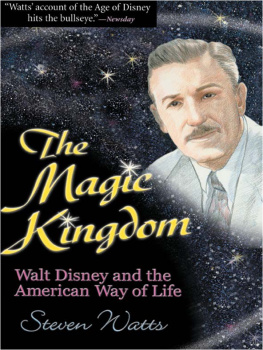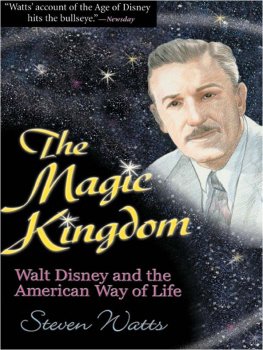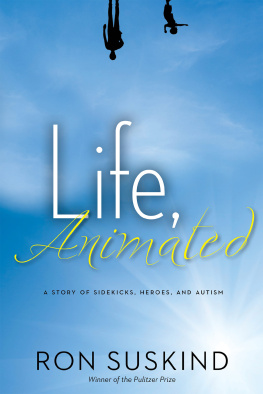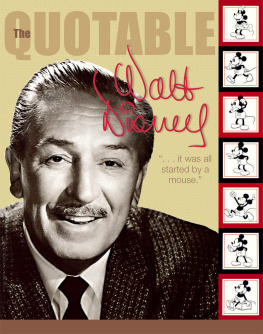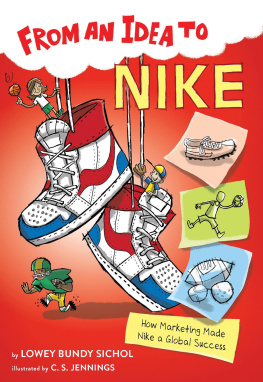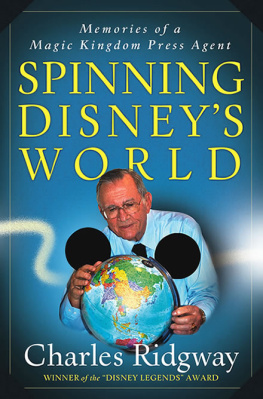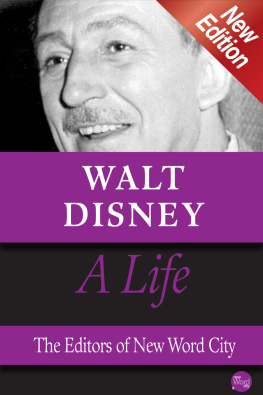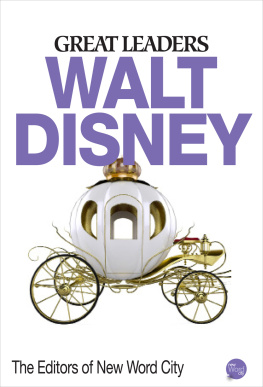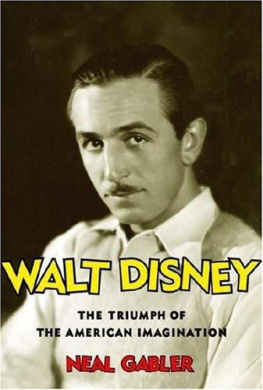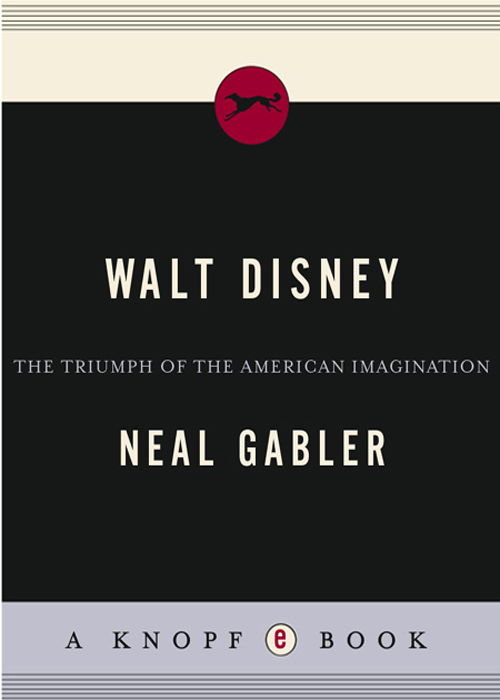INTRODUCTION
He was frozen. At least that was the rumor that emerged shortly after his death and quickly became legend: Walt Disney had been cryogenically preserved, hibernating like Snow White and Sleeping Beauty, to await the day when science could revive him and cure his disease. Though it is impossible to determine exactly, the source of the rumor may have been a tabloid named National Spotlite, whose correspondent claimed to have sneaked into St. Josephs Hospital where Disney had expired, disguised himself as an orderly, picked the lock on a storage room door, and spotted Disney suspended in a metal cylinder. The story also surfaced in 1969 in a French publication, Ici Paris, which said it based its report on individuals close to Disney, and it was repeated in The National Tattler, an American scandal sheet, which added that Disney had instructed doctors to thaw him in 1975. Yet another supermarket tabloid, Midnight, under the headline Walt Disney Is Being Kept Alive in Deep Freeze, quoted both a studio librarian who remembered Disney accumulating a vast file of filmed material on cryogenics and an acquaintance of Disneys who said that the producer was obsessed with these movies. A writer for The Mickey Mouse Club television show, produced under Disney auspices, seemed to corroborate the librarians recollection by recalling that Disney had once asked him about cryogenics and that the writer had then had the studio library staff research the subject. Ward Kimball, a puckish animator at the studio, took some pride in keeping the rumor afloat. And Disney himself may have lent it credence. According to one account, just weeks after his death studio department heads were invited to a screening room with nameplates on the seats, then watched a film of Disney sitting at his desk and eerily pointing to and addressing each of them on future plans. He concluded by smiling knowingly and saying that he would be seeing them soon.
In truth, Disneys final destination was fire, not ice; he had been cremated and his ashes interred in a mausoleum in a remote corner of the Forest Lawn Cemetery in Glendale, California, not far from his studio. But the persistence of the rumor, however outlandish, testified not only to the identification of Disney with futuristic technology late in his life but to a public unwillingness to let go of him, even to the point of mythologizing him as an immortal who could not be felled by natural forces. Arguably no single figure so bestrode American popular culture as Walt Disney. By one estimate, in 1966 alone, the year of his death, 240 million people saw a Disney movie, a weekly audience of 100 million watched a Disney television show, 80 million read a Disney book, 50 million listened to Disney records, 80 million bought Disney merchandise, 150 million read a Disney comic strip, 80 million saw a Disney educational film, and nearly 7 million visited Disneyland. By another estimate, during his lifetime Disneys live-action films grossed nearly $300 million and the feature animations just under $100 million, when these were astronomical figures, and more than 60 million people had visited Disneyland. The Saturday Evening Post once called him the worlds most celebrated entertainer and possibly its best known non-political public figure, and The New York Times eulogized him as probably the only man to have been praised by both the American Legion and the Soviet Union.
But Walt Disneys influence cannot be measured by numbers or encomia. It can only be measured by how thoroughly he reshaped the culture and the American consciousness. Disney was protean. In the late 1920s he began reinventing animation, gradually turning it from a novelty that emphasized movement and elasticity of line into an art form that emphasized character, narrative, and emotion. In doing so, he also helped reinvent graphic design by introducing the soft, round, bold, colorful forms that decades later would be adopted and adapted by a vanguard of fine artists. The critic Robert Hughes credited him with inventing Pop Art itself, not only in the look he bequeathed but also in the convergence of high art and low that he effected. [I]t happened, Hughes wrote, when, in Fantasia, Mickey Mouse clambered up to the (real) podium and shook hands with the (real) conductor Leopold Stokowski.
Beyond his animations, Disney changed the shape of American recreation with his Disneyland park. Obviously there had been amusement parks before Disneyland, but they had been grab-bag collections of various rides, games, and shows. Disney reconceptualized the amusement park as a full imaginative experience, a theme park, rather than a series of diversions, and just as his animation revised graphic design, his park eventually revised urban design. Detractors called the effect Disneyfication, meaning the substitution of a synthetic world for a real one, but the urban planner James W. Rouse commended Disneyland as the greatest piece of urban design in the United States for the way it managed to serve its function and satisfy its guests, and architecture critic Peter Blake wrote, [I]t seems unlikely that any American school of architecture will ever again graduate a student without first requiring him to take a field trip to Orlando, [Florida], the site of Walt Disney World Resort, the East Coast sequel to Disneyland. In time Disneyland, with its faux environments and manipulated experiences, would become a metaphor for a whole new consciousness in which, for better or worse, the fabricated was preferred over the authentic and the real could be purged of its threats. As Robert Hughes put it, [H]is achievement became a large shift in the limits of unreality.
Disneys influence also impregnated the American mind in subtler, less widely recognized ways. As he reinvented animation and amusement, he changed Americans view of their own history and values. In live-action films like So Dear to My Heart, Old Yeller, and


